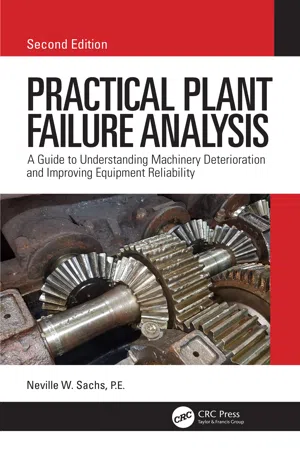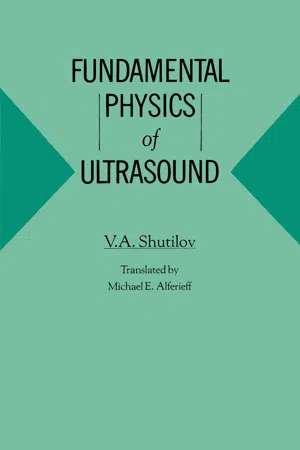Physics
Young's Modulus
Young's Modulus, also known as the elastic modulus, is a measure of the stiffness of a material. It quantifies how much a material will deform under a given amount of force. It is used to predict how a material will behave under stress and is an important property in engineering and materials science.
Written by Perlego with AI-assistance
Related key terms
Related key terms
1 of 4
Related key terms
1 of 3
5 Key excerpts on "Young's Modulus"
- eBook - ePub
Materials
Engineering, Science, Processing and Design
- Michael F. Ashby, Hugh Shercliff, David Cebon(Authors)
- 2009(Publication Date)
- Butterworth-Heinemann(Publisher)
mode of loading . The cover picture illustrates the common ones. Ties carry tension—often, they are cables. Columns carry compression—tubes are more efficient as columns than solid rods because they don’t buckle as easily. Beams carry bending moments, like the wing spar of the plane or the horizontal roof beams of the airport. Shafts carry torsion, as in the drive shaft of cars or the propeller shaft of the plane. Pressure vessels contain a pressure, as in the tires of the plane. Often they are shells: curved, thin-walled structures.Stiffness is the resistance to change of shape that is elastic , meaning that the material returns to its original shape when the stress is removed. Strength (Chapter 6 ) is its resistance to permanent distortion or total failure. Stress and strain are not material properties; they describe a stimulus and a response. Stiffness (measured by the elastic modulus E , defined in a moment) and strength (measured by the elastic limit σ y or tensile strength σ ts ) are material properties. Stiffness and strength are central to mechanical design, often in combination with the density, ρ . This chapter introduces stress and strain and the elastic moduli that relate them. These properties are neatly summarised in a material property chart —the modulus–density chart—the first of many that we shall explore in this book.Density and elastic moduli reflect the mass of the atoms, the way they are packed in a material and the stiffness of the bonds that hold them together. There is not much you can do to change any of these, so the density and moduli of pure materials cannot be manipulated at all. If you want to control these properties you can either mix materials together, making composites, or disperse space within them, making foams. Property charts are a good way to show how this works.4.2 Density, stress, strain and moduli
Density
Many applications (e.g. sports equipment, transport systems) require low weight and this depends in part on the density of the materials of which they are made. Density is mass per unit volume. It is measured in kg/m3 or sometimes, for convenience, Mg/m3 (1 Mg/m3 = 1000 kg/m3 ).The density of samples with regular shapes can be determined using precision mass balance and accurate measurements of the dimensions (to give the volume), but this is not the best way. Better is the ‘double weighing’ method: the sample is first weighed in air and then when fully immersed in a liquid of known density. When immersed, the sample feels an upward force equal to the weight of liquid it displaces (Archimedes’ principle1 ). The density is then calculated as shown in Figure 4.1 - eBook - ePub
Practical Plant Failure Analysis
A Guide to Understanding Machinery Deterioration and Improving Equipment Reliability, Second Edition
- Neville W Sachs, P.E.(Authors)
- 2019(Publication Date)
- CRC Press(Publisher)
6 and they elongate identically. (The reason we sometimes use higher strength materials is that they will elastically deform much more before taking a permanent set, i.e., before their yield strength is exceeded.)Figure 3.4 A typical stress-stain diagram showing how much a part distorts with a given load (stress).Other metals have differing moduli of elasticity as shown in Table 3.1 .Table 3.1 Elastic Moduli (Young’s Modulus) for Some Common MaterialsMaterial Metric Units – GPa US Units – × 106 psiAluminum 69 10 Beryllium 269 39 Cast Iron 90 to 150 13 to 22 Copper 105 15.5 Lead 14 2 Monel 175 25 Stainless Steel 190 28 Mild Steel 206 30 Titanium 103 15 Nylon 7.5 to 19 1.1 to 2.8 Polyethylene 48 to 95 7 to 14 Looking at the modulus of elasticity values in the chart, one sees that if identical pieces are made out of aluminum and steel and loaded in the same manner, the aluminum part will elongate or deflect almost three times as much as the steel one. By the same token, a copper piece with the same load would deflect about twice what the steel piece would do. This elongation (or strain ) is relatively easy to calculate.The modulus of elasticity, E, is expressed in GPa or psi and can be visualized as the load that would cause a perfectly elastic part to double in length. Knowing the stress (s), area (a), part length (l), and Young’s modulus (E), it is relatively simple to calculate the elongation or strain with the formula: - eBook - ePub
- Malgorzata Lekka(Author)
- 2017(Publication Date)
- Jenny Stanford Publishing(Publisher)
Copyright © 2017 Pan Stanford Publishing Pte. Ltd. ISBN 978-981-4669-67-2 (Hardcover), 978-1-315-36480-3 (eBook) www.panstanford.comFigure 4.1 Relation between stress and strain for a hypothetical material.In the low-strain region, many materials obey the Hooke’s law saying that a stress σ is proportional to a strain ε (σ = E· ε ). The proportionality factor is Young’s modulus E (frequently called elastic modulus). In this region, materials areelastic ,i.e., if some deformation is produced in a material by applied stress, stress release brings deformation back to zero [4 ]. A classic example of elastic material is a metal spring. Here, the applied stress changes linearly with a strain following the above-mentioned Hooke’s law:F = k ⋅ x ,( 4.1 )where k is the elasticity constant of a spring (i.e., spring constant), x is the displacement of the end of the spring from its equilibrium position (i.e., when applied stress equals to zero), and F is the force exerted on the material.As strain increases, many materials deviate from this linear dependence (material becomes non-elastic ). The point of transition is termed a yield point . Once it is reached, the applied stress produces a certain fraction of deformations that is permanent and non-reversible (material becomes plastic ). Further strain increase leads to a material failure. There are several theories developed to describe plastic material properties (i.e.,material plasticity) based on three common assumptions:- (a) During plastic deformation, the sample volume does not change.
- (b) The directions of principal strains and stresses overlap.
- (c) In each point, the maximum shear stress is equal to a specific constant.
The simplest theory describing plasticity considers tensions induced in the material under deformations following the Hooke’s law [5 ]. Lack of proportionality beyond the elastic limit (a yield point) in the stress–strain curve is explained assuming that Young’s modulus is not constant. It is expressed as a function of a strain ε - eBook - ePub
- Shutilov(Author)
- 2020(Publication Date)
- CRC Press(Publisher)
Since strains along the y and z axes in a continuous medium must be accompanied by corresponding stresses, the initial condition of one-dimensional stress can be satisfied only in the presence of free lateral surfaces. Therefore, the case examined is realized for extension of a rod oriented along the x -axis. The coefficient in front of the stress in the first of equations (I.24), by definition, represents the coefficient of extension of the rod being stretched and the inverse quantity is the effective modulus of elasticity, which in this case is called Young’s modulus : E = (3 λ + 2 μ) μ λ + μ. (I.25) Substituting (I.25), the first equation of (I.24) assumes the form ϵ 11 = σ / E. Thus Young’s modulus characterizes the rigidity of the rod relative to longitudinal extension (compression) and determines the mechanical stress with which the magnitude of the strain must equal 1, i.e. , the length of the rod changes by a factor of two (of course, with Hooke’s law remaining valid). The values of Young’s modulus E for some isotropic bodies are presented in Table 2. Table 2 Values of Young’s Modulus. Poisson’s Ratio, and the Shear Modulus for Some Isotropic Solids Material E · 10 −10. N/m 2 v 0 G · 10 −10. N/m 2 Tungsten 36. 0 0. 27 13. 3 Steel 3 22–24 0. 30 8. 5–8. 8 Iron 21 0. 28 8. 2 Copper 12. 0 0. 35 4. 6 Brass 9–10 0. 35 3. 0–3. 7 Gold 8. 0 0. 41 2. 9 Aluminum 7. 0 0. 34 2. 6 Tin 5. 4 0. 33 2. 0 Lead 1.6 0. 44 0. 6 Fused quartz 7. 4 0. 18 3. 2 Glass crown 7. 2 0. 25 2. 9 flint 5. 5 0. 23 2. 4 Porcelain 6. 0 0. 23 2. 4 Ice 1. 0 0. 33 0. 4 Plexiglass 0. 5 0. 35 0. 15 The absolute ratio of the transverse deformation of the rod to the longitudinal deformation, i.e. , the relative elongation due to the longitudinal stress, is called Poisson’s ratio (v 0) : ν 0 = | ϵ 2 2 ϵ 1 1 | = | ϵ 3 3 ϵ 11 | = ϵ 2 2 E σ = λ 2 (λ + μ). (I.26) Thus ϵ 22 = ϵ 33 = – ν 0 σ / E, i.e - eBook - ePub
- Jeffrey Brooks(Author)
- 2014(Publication Date)
- Butterworth-Heinemann(Publisher)
72 ). This modulus represents just pure elastic effects, since there is only a small stress involved and no microcracking or creep.Figure 4.8 Generalized magnified stress–strain curve for concrete [2] .Source : Concrete Technology, Second Edition, A. M. Neville and J. J. Brooks, Pearson Education Ltd. © Longman Group UK Ltd. 1987.When the strain response is required after a particular application of stress σ s , the appropriate strain is given by the secant modulus , E s ; for example, in creep tests; the secant modulus is also known as the chord modulus . The strain for small changes in stress around the nominal stress of σ s , is determined by the tangent modulus , E t . There is also an unloading modulus , E u , which quantifies stress and strain in the case of decreasing load. Since, generally, the unloading modulus is parallel to the initial tangent modulus, E u is often used to determine E to since the tangent to the loading curve at near zero stress is difficult to judge; as stated earlier, the initial tangent modulus is also approximately equal to the dynamic modulus.Composite models for representing the modulus of elasticity of concrete have been presented in Chapter 3 , and all models reveal the importance of influencing factors: moduli of aggregate and hardened cement paste phases as well as their proportions by volume. Table 4.3 compares predictions with measured values, and demonstrates the effects of those influencing factors. When modulus of the mortar or cement paste are known, Counto's composite model (Eq. (3.5) ) is superior for predicting the modulus of elasticity of concrete followed by the Hirsch–Dougill model (Eq. (3.4) ); the limitations of the parallel model (Eq. (3.1) ) and series model (Eq. (3.2) ) are discussed in Chapter 3 . The pattern of behaviour of aggregate type and fraction volume on the modulus of elasticity of concrete is also illustrated in Figure 4.9 made with different materials and a cement paste matrix phase having a modulus of elasticity of 19 GPa. For any type of aggregate, the modulus of elasticity of concrete increases as the fractional volume of aggregate increases, and the modulus of elasticity of concrete increases when the modulus of aggregate exceeds 19 GPa, but decreases when the modulus of aggregate is less than 19
Index pages curate the most relevant extracts from our library of academic textbooks. They’ve been created using an in-house natural language model (NLM), each adding context and meaning to key research topics.
Explore more topic indexes
Explore more topic indexes
1 of 6
Explore more topic indexes
1 of 4




